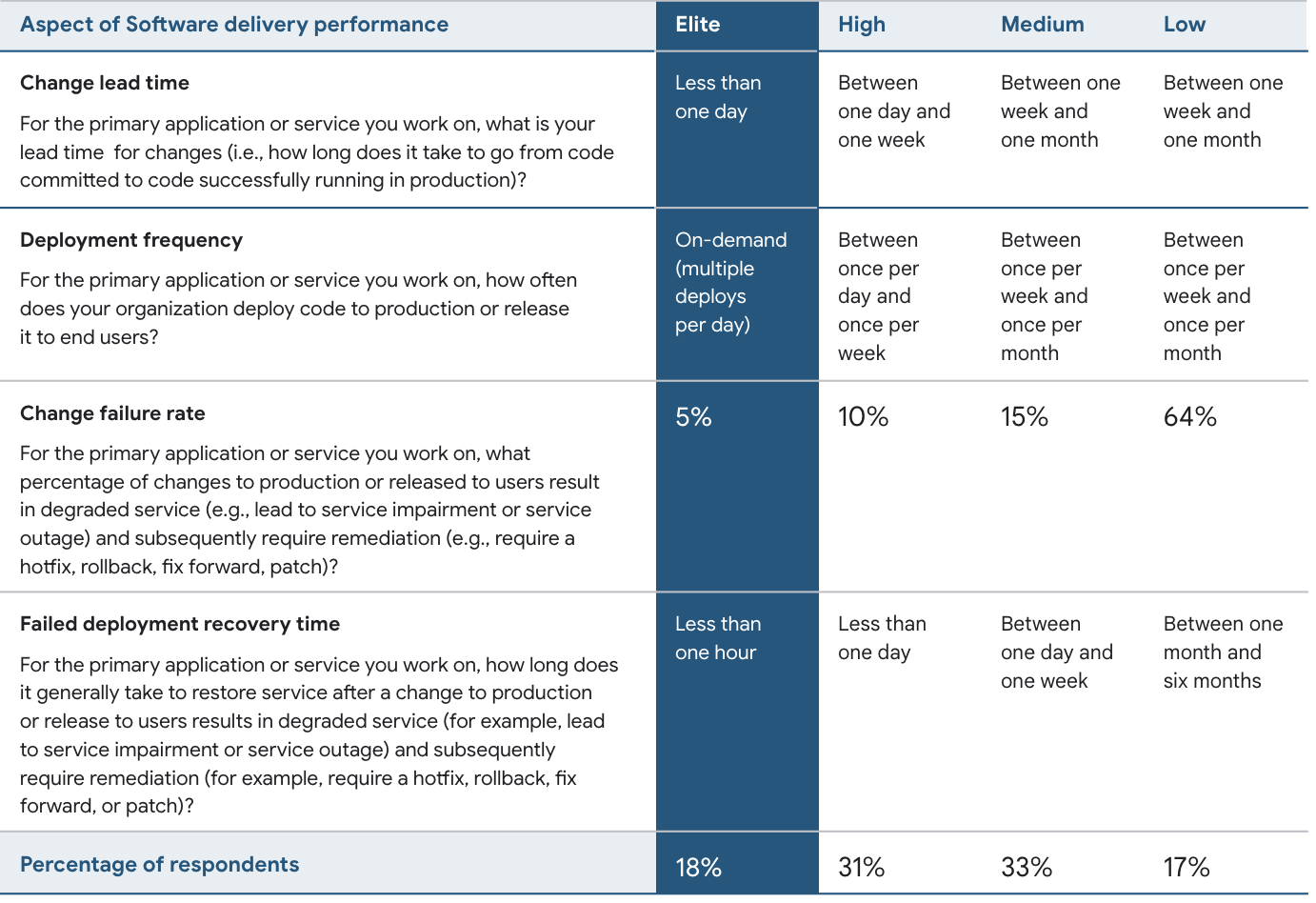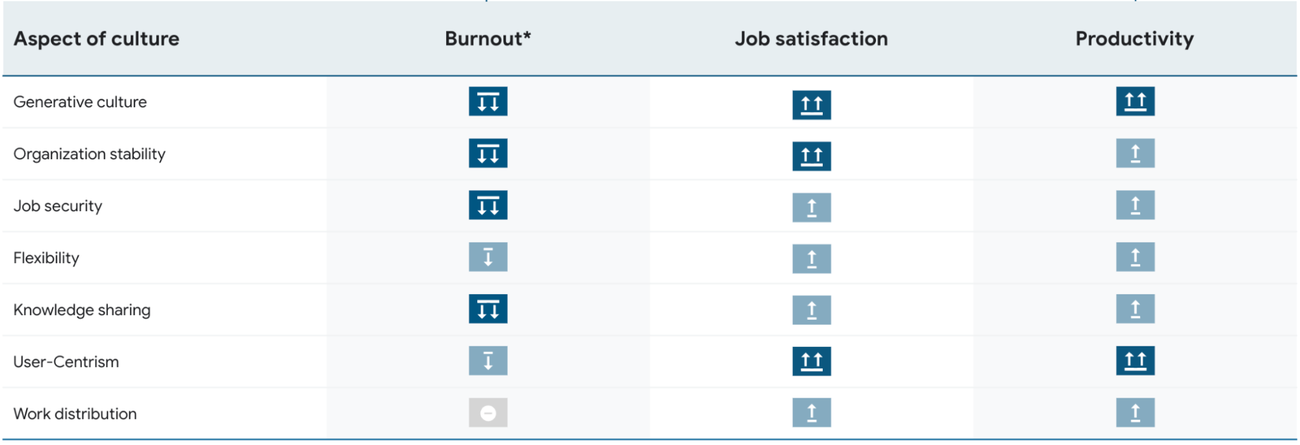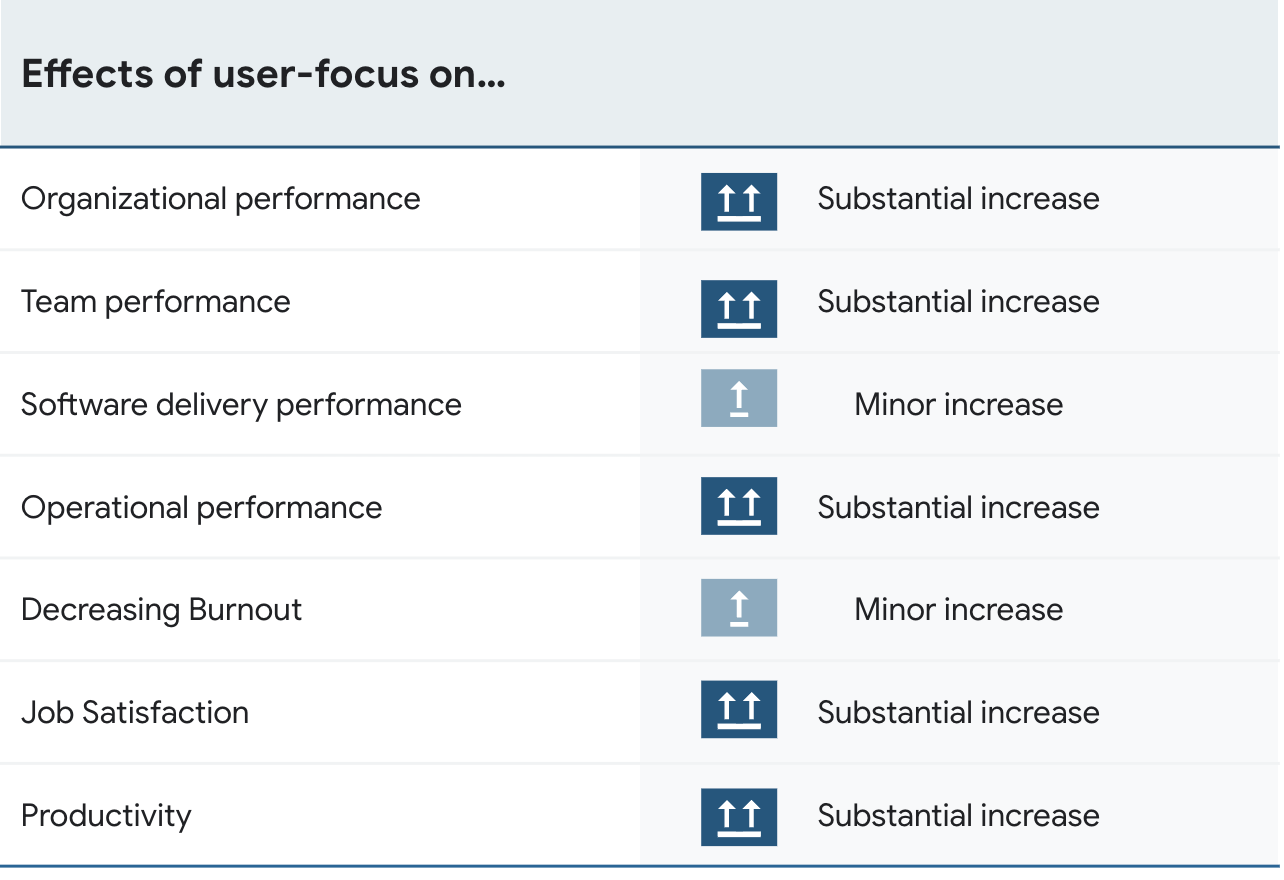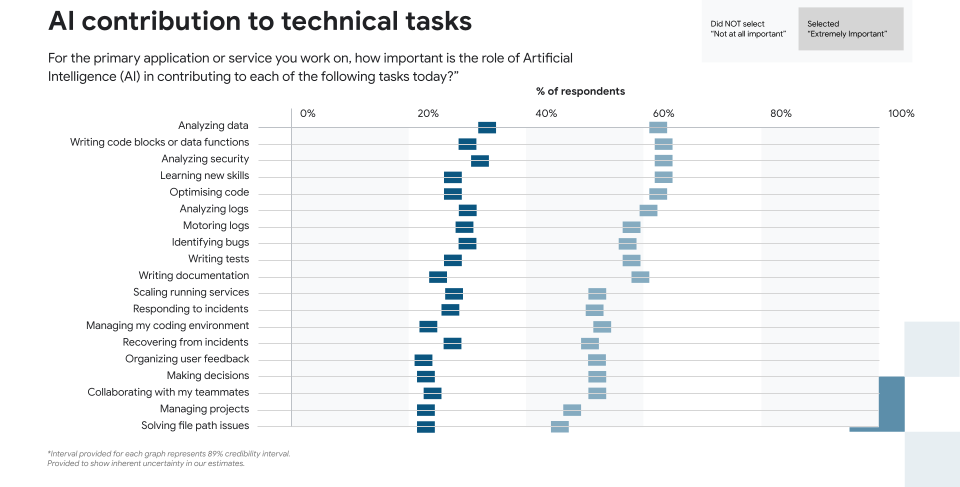2023 State of DevOps Report: Culture is everything

Derek DeBellis
DORA Research Lead
Nathen Harvey
Developer Advocate
In the face of rapid digital transformation, a positive organizational culture and user-centric design are the backbone of successful software delivery. And while Artificial Intelligence (AI) is the center of so many contemporary technical conversations, the impact of AI development tools on teams is still in its infancy.
These are just some of the findings from the 2023 Accelerate State of DevOps Report, the annual report from Google Cloud’s DevOps Research and Assessment (DORA) team.
For nine years, the State of DevOps survey has assembled data from more than 36,000 professionals worldwide, making it the largest and longest-running research of its kind. This year, we took a deep dive into how high-performing DevOps performers bake these technical, process, and cultural capabilities into their development practices to drive success. Specifically, we explored three key outcomes of a having a DevOps practice and the capabilities that contribute to achieving them:
- Organizational performance - generating value for customers and community
- Team performance - empowering teams to innovate and collaborate
- Employee well-being - reducing burnout and increasing satisfaction/productivity
This year, we were working with a particularly robust data set: the total number of organic respondents increased by 3.6x compared to last year, allowing us to perform a deeper analysis of the relationship between ways of working and outcomes. Thank you to everyone who took the survey this year!
Measuring software delivery performance
Our research shows that an organization’s level of software delivery performance predicts overall performance, team performance, and employee well-being. In turn, we use the following measures to understand the throughput and stability of software changes:
- Change lead time: how long it takes a code change to go from committed to deployed
- Deployment frequency: how frequently changes are pushed to production
- Change failure rate: how frequently a software deployment introduces a failure that requires immediate intervention
- Failed deployment recovery time: how long it takes to recover from a failed deployment
Our analysis revealed four performance levels, including the return of the Elite performance level, which we did not detect in last year’s cohort. Elite performers around the world are able to achieve both throughput and stability.


Five key insights
There are several key takeaways for teams who want to understand how to improve their software delivery capabilities. Here are some of the key insights from this year’s report:
1. Establish a healthy culture
Culture is foundational to building technical capabilities, igniting technical performance, reaching organizational performance goals, and helping employees be successful. A healthy culture can help reduce burnout, increase productivity, and increase job satisfaction. Teams with generative cultures, composed of people who felt included and like they belonged on their team, have 30% higher organizational performance than organizations without a generative culture.


The aspects of culture that can improve employee well-being
2. Build with users in mind
Teams can deploy as fast and successfully as they'd like, but without the user in mind, it might be for naught. Our research shows that a user-centric approach to building applications and services is one of the strongest predictors of overall organizational performance. In fact, building with the user in mind appears to inform and drive improvements across all of the technical, process, and cultural capabilities we explore in the DORA research. Teams that focus on the user have 40% higher organizational performance than teams that don’t.


3. Amplify technical capabilities with quality documentation
High-quality documentation amplifies the impact that DevOps technical capabilities (for example, continuous integration and trunk-based development) have on organizational performance. This means that quality documentation not only helps establish these technical capabilities, but helps them matter. For example, SRE practices are estimated to have 1.4x more impact on organizational performance when high-quality documentation is in place. Overall, high-quality documentation leads to 25% higher team performance relative to low-quality documentation.
4. Distribute work fairly
People who identify as underrepresented and women or those who chose to self-describe their gender have higher levels of burnout. There are likely multiple systemic and environmental factors that cause this. Unsurprisingly, we find that respondents who take on more repetitive work are more likely to experience higher levels of burnout, and members of underrepresented groups are more likely to take on more repetitive work: Underrepresented respondents report 24% more burnout than those who are not underrepresented. Underrepresented respondents do 29% more repetitive work than those who are not underrepresented. And women or those who self-reported their gender do 40% more repetitive work than men.
5. Increase infrastructure flexibility with cloud
Teams can get the most value out of the cloud by leveraging the characteristics of cloud like rapid elasticity and on-demand self-service. These characteristics predict a more flexible infrastructure. Using a public cloud, for example, leads to a 22% increase in infrastructure flexibility relative to not using the cloud. This flexibility, in turn, leads to teams with 30% higher organizational performance than those with inflexible infrastructures.
AI: we're just getting started
There is a lot of enthusiasm about the potential of AI development tools. We saw this in this year’s results — in fact a majority of respondents are incorporating at least some AI into the tasks we included in our survey. But we anticipate that it will take some time for AI-powered tools to come into widespread and coordinated use in the industry. We are very interested in seeing how adoption grows over time and the impact that growth will have on performance measures and outcomes that are important to organizations. Here’s where we are seeing the adoption of AI tools today:


Applying insights from DORA in your context
The key takeaway from DORA’s research is that high performance requires continuous improvement. Regularly measure outcomes across your organization, teams, and employees. Identify areas for optimization and make incremental changes to dial up performance.
Don't let these insights sit on a shelf — put them into action. Contextualize the findings based on your team's current practices and pain points. Have open conversations about your bottlenecks. Comparing your metrics year-over-year is more meaningful than comparing yourself to other companies. Sustainable success comes from repeatedly finding and fixing your weaknesses. DORA's framework can help you determine which capabilities to focus on next for the biggest performance boost.
We hope the Accelerate State of DevOps Report helps organizations of all sizes, industries, and regions improve their DevOps capabilities, and we look forward to hearing your thoughts and feedback. To learn more about the report and implementing DevOps with Google Cloud:
- Download the full report.
- Measure your team’s software delivery performance in less than a minute using DORA's DevOps Quick Check.
- Model your organization around the DevOps capabilities of elite-performing teams.
- Share your experiences, learn from others, and get inspiration by joining the DORA community.



